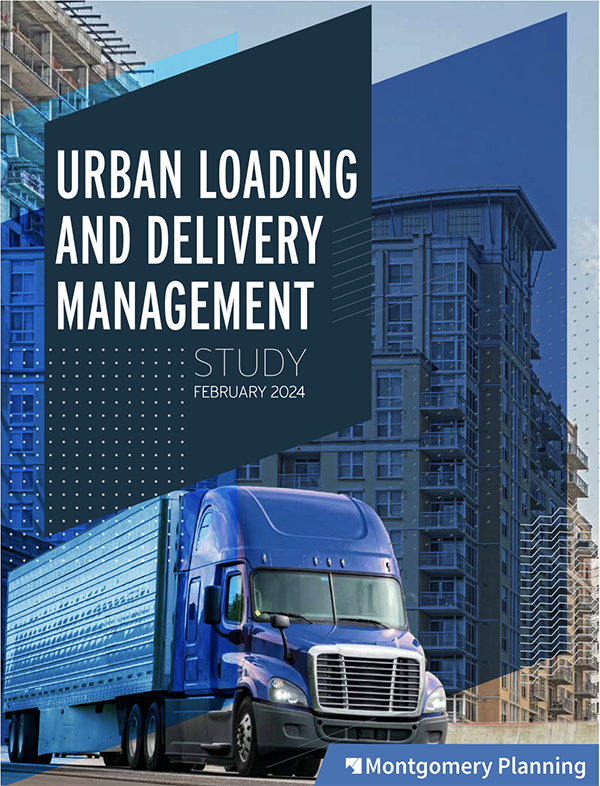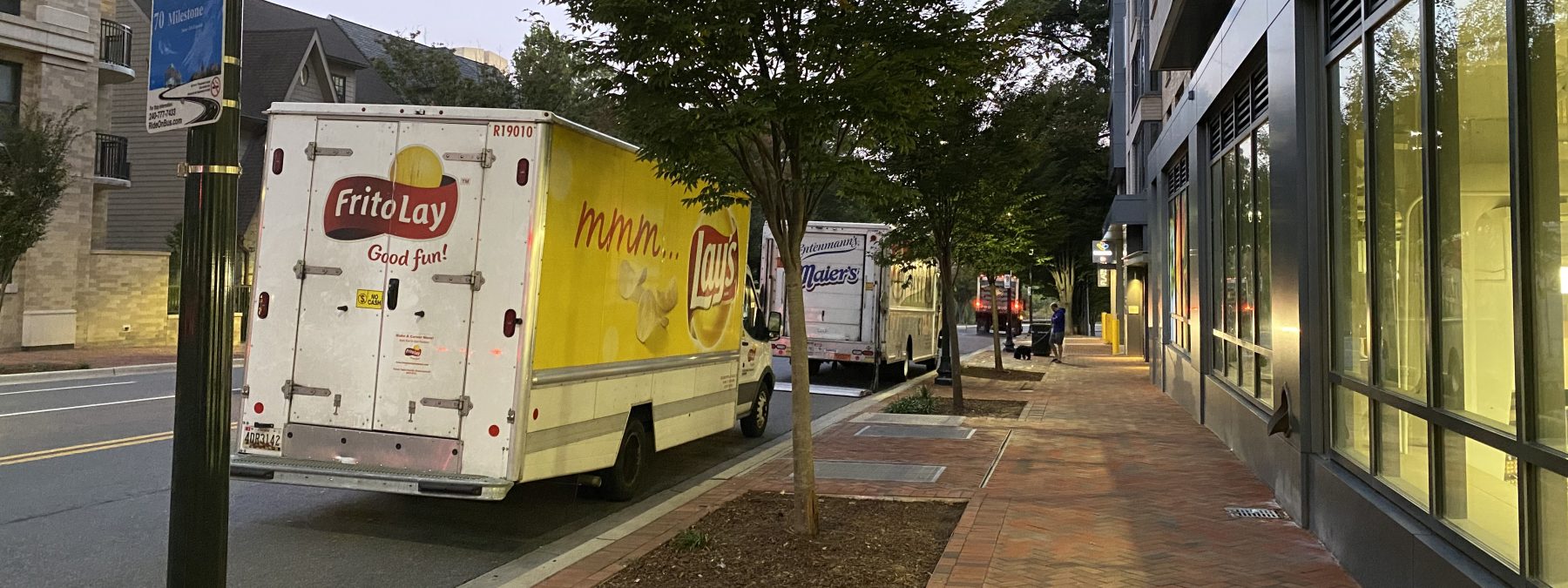Background
The County’s urbanizing areas are thriving centers with numerous commercial and residential buildings, restaurants, shops, public open spaces, art galleries, and entertainment venues. However, these desirable land uses, and centers of activity, along with the associated expansion of high-quality pedestrian and bicycle infrastructure, present challenges in accommodating efficient and safe loading and delivery functions for all users.
With increasing frequency, commercial and private loading and delivery vehicles are making use of public roads and sidewalks in ways that disrupt orderly vehicular, bicycle, and pedestrian traffic and undermine safety. Loading and delivery activities are a critical part of a vibrant downtown. The timing and manner of those deliveries are equally a critical part of providing a safe and efficient multimodal transportation network.

Urban Loading and Delivery Management Study
Appendices
Appendix A: Outreach and Engagement Summary
Appendix B: Zoning Ordinance Loading Design Standards
Summary
The purpose of this study is to identify regional, national and international best practices and policy options to better balance loading and delivery functions with through-movements of people and goods in urbanizing areas of the County. This study addresses challenges associated with expanding loading and deliveries on urban streets and sidewalks. Staff conducted interviews with:
- public agencies, including Montgomery County Department of Transportation, Department of Permitting Services, Police Department, Bethesda-Chevy Chase Regional Service Center, and the Bethesda Urban Partnership;
- community stakeholders including commercial property managers, the Greater Bethesda Chamber of Commerce, the Transportation Management District Advisory Committee, and the Bethesda Downtown Implementation Advisory Committee; and
- delivery companies Amazon, FedEx, and DHL International.
Staff studied existing conditions in downtown Bethesda, as well as recent large-site developments including Downtown Crown in Gaithersburg, NoBe Market in North Bethesda, and Mosaic in Fairfax County, Virginia, and also identified current regulatory and administrative structures related to loading and deliveries.
The study findings include documentation of the problem, challenges identified by stakeholder groups, analysis of current enforcement, a review of best practices from around the region, country, and beyond, and lessons learned from studies of regional developments.
Recommendations
The study identifies two main questions to guide future action:
- Are current on-site loading standards adequate to current and evolving needs and practices?
- How can public agencies accommodate the changing needs of delivery services for proximate short-term delivery space?
The questions are not a matter of “bad actors” but of standards mismatched to current needs and practices. Each step in the loading and delivery management process, from the design and function of on-site loading facilities to the public sidewalks and streets outside them, is interconnected and collectively function to meet the needs of residents, businesses, and visitors. Public agencies and community stakeholders must collaborate to make it easier for loading and deliveries to coexist with other functions of the public right-of-way: not to focus solely on enforcement of current standards, but to develop new flexible approaches.
The study recommends the following actions:
- Implement Loading and Delivery Management Districts;
- Reassess and expand standards for off-street loading facilities;
- Expand use of Loading Management Plans;
- Create a grid of streets an alleys along transit corridors; and
- Conduct a study of Curbside Management.
